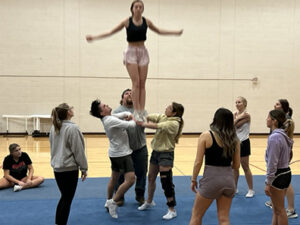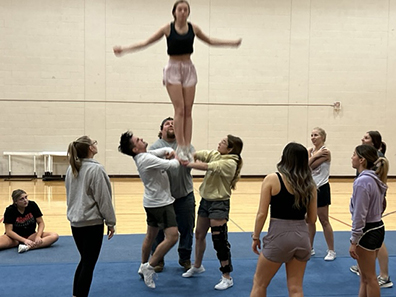By Gavin Mendoza, Senior Reporter
Whenever a major athlete takes a hit to the head, sporting officials and media pundits begin talking about concussions – temporary spells of confusion or unconsciousness resulting from an injury.
Now, concussion awareness is growing among student athletes at the collegiate level because of how often they occur and how serious they can be.
“A concussion is an invisible injury,” Dr. John Leddy, a concussion expert at the Concussion Management Clinic at the University of Buffalo, said in an article with The Spectrum newspaper. “Imagine if you had the flu for more than a month — that would interfere with your life.”
Concussions often go unreported because some symptoms cannot be seen, creating an epidemic that is plaguing student-athletes across the country.
Northwestern Oklahoma State University athletic trainer Brett Purnell has experience treating concussions. He said he is becoming more understanding of evolving concussion treatment protocol.
“In recent years, there has been increased public attention to concussion protocol and what it entails, mostly due to situations in the NFL,” Purnell said. “The most recent example of Tua Tagovailoa has shown the public the dangers of head injuries when the brain is not given adequate time to heal before return to play.”
Tagovailoa, a Miami Dolphins player, sustained repeated injuries during the 2022 season after continuing to play while having a concussion. He is one of many athletes who have had a concussion but continued to play. While athletes may try to show how strong they are by charging forward, it is important for them to be educated and understand that it is OK to sit out after a head injury.
“The core concept is to ensure the mind and body are ready to return to activity in incremental steps,” Purnell said. “Athletic trainers can more easily identify when an athlete may be ‘feeling off’ before anyone else can.”
A recent study conducted by the University of New South Wale’s Centre for Healthy Brain Ageing found that three or more concussions can cause long-term cognitive problems, compounding health issues for athletes with multiple injuries.

“I definitely believe that there is a certain point at which an athlete has suffered too many concussions and should consider refraining from participation in contact sports,” Purnell said. “At what point that decision is made should be discussed by the athlete and the sports medicine team serving that athlete.”
An athlete who has experienced concussions several times and continued to play his favorite sport is on the Northwestern baseball team. The decision was not an easy one, but he did not want to give up the sport he loves, he said.
Zach Vetal, a junior from Plano, Texas, has had six concussions while playing baseball.
“I had my first concussion in my junior year of high school in 2019,” he said. “I have had five more since then.”
The journey back to a sport after an injury is never an easy one, Vetal said. He suffered vision damage from his injuries.
“The only reason I am still able to play is because of vision therapy,” Vetal said. “Vision therapy retrains the connection between your eyes and brain and can significantly improve a player’s recovery and the academic issues as well.”
Concussions have affected athletes’ lives both on and off the field. Student-athletes already face stress, and adding a concussion to the mix can create major problems that hinder their learning, he said.
“The concussions affected my classroom concentration and made it harder for me to stay focused,” he said. “It also has made it harder to remember what I had learned previously.”
Although Vetal experiences those symptoms, he said he believes the university’s concussion protocol is adequate.
“I personally don’t think the protocol needs to change too much,” Vetal said. “It is more important to explain to the athlete that they must be honest with the way they are feeling.”
Cade Phelps, a senior from Wellington, Kansas, experienced concussions while playing football in high school. He sat out for seven days before easing back into action.
“I believe that concussion protocols have been changing throughout the years,” Phelps said. “The importance of athletic trainers is being emphasized as well for the well-being of athletes.”

